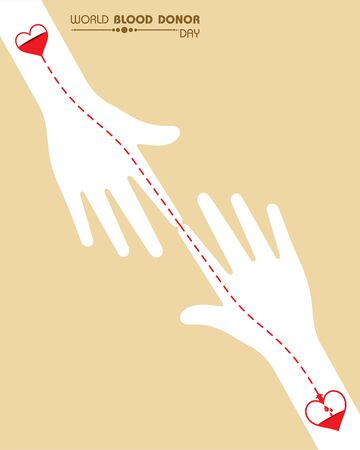Introduction to Mystic Cross in Indian Palmistry
The study of palmistry, or hast rekha shastra, holds a significant place in Indian tradition and culture. Among the various markings found on the human palm, the Mystic Cross—also known as the “Samudrik Shastra Cross”—is regarded as one of the most intriguing and auspicious signs. The Mystic Cross is typically located between the Head Line and Heart Line, forming a small X or cross-shaped marking in the centre of the palm. In Indian beliefs, this sign is said to indicate a person with deep spiritual inclination, intuitive powers, and a connection to higher wisdom.
References to special marks like the Mystic Cross can be traced back to ancient scriptures such as the Samudra Shastra and other Vedic texts, where such unique symbols were believed to reveal an individual’s destiny and karmic path. Local traditions in India often consider those with a clear Mystic Cross as blessed individuals, thought to possess natural psychic abilities or a strong sense of intuition. In many households, elders may look for this sign during auspicious occasions or when making important life decisions.
This overview sets the foundation for understanding not only what the Mystic Cross represents but also its relevance within the broader context of Indian palmistry. As we delve deeper into its meaning, significance, and interpretation in subsequent sections, it becomes evident why this particular mark continues to captivate both modern enthusiasts and traditional practitioners of palm reading across India.
2. Cultural Importance and Local Interpretations
In Indian palmistry, the Mystic Cross holds a special place due to its association with spirituality, intuition, and divine connection. This unique mark, found between the heart line and the head line, is often seen as a sign of heightened intuition and spiritual awareness. The cultural importance of the Mystic Cross goes beyond mere fortune-telling; it is deeply rooted in beliefs, superstitions, and even astrology.
Common Beliefs Surrounding the Mystic Cross
Across various regions of India, people believe that those who possess a Mystic Cross are blessed with insight into hidden truths and are protected by higher forces. Some common beliefs include:
| Belief | Interpretation |
|---|---|
| Spiritual Gift | The person is believed to have a natural gift for understanding deeper spiritual matters. |
| Divine Protection | The cross is seen as a sign of protection from negative energies or evil influences. |
| Intuitive Power | Individuals are thought to possess strong intuition and psychic abilities. |
| Karmic Blessing | The Mystic Cross may be viewed as an indication of good karma accumulated from past lives. |
Role in Astrology and Spirituality
The intersection of palmistry with Indian astrology (Jyotish Shastra) further enhances the significance of the Mystic Cross. Astrologers often consider this marking when analyzing an individual’s horoscope, especially when determining spiritual inclinations or yogic potential. Many local gurus, astrologers, and palmists suggest that a Mystic Cross on the palm can indicate a promising path in meditation, yoga, or religious service.
Superstitions Linked to Unique Marks on Mounts
Besides the Mystic Cross, unique marks such as stars, triangles, or squares on the mounts of the palm also carry deep-rooted meanings in Indian culture. These signs are not only interpreted for personal destiny but also influence important life decisions such as marriage, career choices, and spiritual practices.
| Unique Mark | Cultural Interpretation in India |
|---|---|
| Star on Mount of Jupiter | Leadership qualities; auspicious for government jobs or authority positions. |
| Triangle on Mount of Mercury | Business acumen; success in trade and communication fields. |
| Square on Mount of Venus | Protection in love matters; harmonious family life. |
| Mystic Cross on Mount of Saturn | Deep wisdom; inclination towards occult sciences or philosophy. |
Societal Perspectives and Modern Views
While traditional beliefs remain strong in rural areas and among older generations, urban youth may see these markings more as symbols of personality traits rather than fixed destinies. However, even today, many consult palmists before major events or during festivals to seek guidance based on these unique signs. Thus, the interpretation of the Mystic Cross and other marks continues to play a vital role in shaping both personal and societal outlooks across India.

3. Signs and Their Meanings on Palm Mounts
In Indian palmistry, the mounts of the palm—such as Mount of Jupiter, Saturn, Sun (Apollo), Mercury, Moon, Venus, and Mars—are considered highly significant. The presence of certain unique marks or signs on these mounts can reveal much about an individual’s destiny, character, and spiritual inclination. Let us explore some of the most important markings commonly found on the palm mounts and understand their meanings according to traditional Indian beliefs.
Star Marking (★)
A star formed by three or more intersecting lines is regarded as a very powerful sign in Indian palmistry. On any mount, a clear star indicates sudden fortune or unexpected events linked to the characteristics of that particular mount. For example:
- Star on Mount of Jupiter: Symbolises spiritual elevation, leadership qualities, and honour in society.
- Star on Mount of Sun: Indicates fame, artistic success, and recognition.
- Star on Mount of Mercury: Suggests exceptional intelligence and business acumen.
Triangle Marking (△)
The triangle is seen as a positive sign representing wisdom, balance, and protection. Its meaning varies depending on its location:
- Triangle on Mount of Mars: Signifies courage in adversity and strategic thinking.
- Triangle on Mount of Moon: Denotes strong intuition and creative imagination.
Square Marking (□)
A square is considered a protective symbol in Indian palmistry. It acts like a ‘shield’ that guards against negative influences related to the specific mount.
- Square on Mount of Venus: Offers protection from emotional turmoil; ensures stable relationships.
- Square on Mount of Saturn: Safeguards from misfortune or accidents; provides grounding and stability.
Mystic Cross and Other Unique Marks
The Mystic Cross itself—a cross between the Head Line and Heart Line—shows spiritual insight and keen intuition. Other marks such as circles (rare but auspicious), tridents (suggesting triple blessings), or single vertical lines (indicating focused energy) are also interpreted with great care in Indian traditions. These marks are never read in isolation; their meanings are enhanced or diminished by the quality and strength of the surrounding lines and mounts.
Cultural Note
It is important to remember that in India, palmistry is not just about prediction but also about understanding one’s karmic path and personal growth. While certain signs may bring good fortune or challenges, they also encourage self-awareness and dharma (right conduct).
4. Unique Marks and Their Symbolic Values
In Indian palmistry, rare and auspicious marks found on the mounts of the palm are given special importance. These unique symbols are not only visually distinctive but are also deeply rooted in Indian culture and spirituality, often regarded as signs that can dramatically influence an individual’s destiny. Understanding these marks helps practitioners interpret messages about a persons karmic journey, spiritual inclinations, and potential for success or challenges. Below is an explanation of some prominent marks, their meanings, and implications:
Swastika (卐)
The Swastika is a powerful symbol in Indian tradition, representing prosperity, good fortune, and spiritual advancement. If this mark appears clearly on any mount—especially the Mount of Jupiter or Mount of Sun—it is believed to bestow extraordinary luck, honour, leadership qualities, and protection from evil influences.
Trident (त्रिशूल)
The Trident mark resembles the trishul, a divine weapon associated with Lord Shiva. When found on mounts such as the Mount of Venus or Mount of Mercury, it signifies strong willpower, victory over obstacles, deep wisdom, and spiritual elevation. It also denotes success through righteous means and respect in society.
Other Rare Auspicious Marks
| Mark | Cultural Significance | Destiny Implication |
|---|---|---|
| Lotus | Symbolises purity and enlightenment | Peaceful life, spiritual growth, harmony |
| Flag (Dhwaja) | Victory and recognition | Achievement in career or social status |
| Spear (Shool) | Courage and sharp intellect | Ability to overcome difficulties |
Cultural Perspective in Indian Palmistry
These unique marks are interpreted with reverence in the Indian context. Their appearance is considered extremely rare and is often thought to be the result of accumulated good karma from past lives. Unlike common lines or shapes, such marks are seen as blessings from deities or cosmic forces. The reading of these symbols involves not just technical skill but also an understanding of Vedic philosophies and regional beliefs.
Practical Implications for Individuals
If you discover any of these rare marks on your palm or someone else’s, it is recommended to consult an experienced palmist who understands both classical texts and modern interpretations. Such marks may indicate periods of exceptional progress or protection in life’s journey. In many Indian families, finding these symbols can lead to special rituals or prayers offered for further blessings.
5. Practical Guidance for Recognising and Reading Marks
Step-by-Step Approach for Indian Palmists
Interpreting the mystic cross, signs, and unique marks on the mounts in palmistry requires keen observation, cultural understanding, and a methodical approach. Here is a step-by-step guide tailored for those practising palmistry in India:
Step 1: Prepare the Hand for Observation
Begin by ensuring the hand is clean and relaxed. In Indian tradition, it is common to first examine the right hand for men and the left for women, as per classical beliefs. Good lighting is essential to see the fine lines and subtle markings clearly.
Step 2: Identify the Mounts
Familiarise yourself with the location of each mount (e.g., Mount of Jupiter below the index finger, Mount of Venus at the base of the thumb). Gently stretch the palm to make raised areas more prominent. This will help you distinguish between major mounts and minor elevations influenced by culture or daily activities common in India.
Step 3: Spot Unique Marks and Crosses
Look closely for unique marks such as crosses (X), stars, triangles, or squares on each mount. The mystic cross typically appears between the head and heart line. Use a magnifying glass if needed for finer details. Remember that henna or traditional Indian dyes may sometimes obscure small marks; ensure these are not mistaken for natural lines.
Step 4: Analyse Placement and Clarity
The location, depth, and clarity of a mark are crucial. For example, a clear mystic cross on the Mount of Jupiter can suggest strong spiritual tendencies—a trait respected in many Indian families. A faint or fragmented mark might indicate potential rather than certainty. Analyse if marks intersect important lines (like fate or sun line), as this alters interpretation.
Step 5: Interpret Using Indian Context
While Western texts provide general meanings, add your understanding of Indian traditions—for instance, a star on the Mount of Sun may be seen as a sign of artistic success in Bollywood or classical arts. Consider regional beliefs about auspiciousness; some communities may value certain marks differently based on local customs or astrology.
Final Tips for Everyday Practice
Document your observations in a dedicated notebook, noting any recurring patterns among family members—lineage plays an important role in Indian palmistry. Discuss your findings respectfully with seekers; remember that palmistry is as much about guidance as it is about reading marks. Stay humble and open-minded, combining ancient wisdom with practical advice suitable for modern Indian life.
6. Common Myths and Facts in Indian Palm Reading
When it comes to the interpretation of Mystic Crosses, special signs, and unique marks on the mounts in palmistry, there are numerous myths and misconceptions widely held across India. Let us clarify some of these common beliefs, separating cultural superstitions from authentic palmistry knowledge.
Myth 1: The Mystic Cross Guarantees Spiritual Power
One of the most popular notions in Indian palmistry is that anyone with a Mystic Cross on their palm is destined to become a spiritual guru or possess supernatural abilities. Fact: While the Mystic Cross is often associated with intuition or an interest in spirituality, it does not assure mystical powers or religious prominence. It simply suggests heightened awareness or curiosity towards philosophical matters.
Myth 2: Unique Marks Always Indicate Good Fortune
In Indian society, certain symbols like stars or triangles on mounts are believed to bring automatic wealth, fame, or luck. Fact: Not all unique marks guarantee positive outcomes. For example, while a star may indicate sudden opportunities, its location and clarity matter greatly. Misinterpretation can lead to misplaced hopes or anxiety.
Myth 3: All Signs Have the Same Meaning for Everyone
There is a widespread belief that if two people have similar markings (such as crosses or squares) in the same area, they will share identical destinies. Fact: Palmistry considers the overall hand shape, other lines, mounts, and even finger formation. Each mark’s significance varies depending on the complete context of the individual’s palm.
Cultural Superstitions vs. Practical Analysis
Many people consult pandits or astrologers expecting magical predictions based solely on a single mark. However, traditional palmists stress the importance of analyzing hands holistically rather than relying on isolated symbols. This approach ensures more accurate readings and prevents fear or overconfidence based on partial information.
The Importance of Expert Guidance
If you find a Mystic Cross or any unusual sign on your palm, avoid jumping to conclusions based on hearsay or internet myths. Instead, consult an experienced palmist who understands both classical Indian techniques and modern interpretations. Authentic guidance helps distinguish real potential from superstition.
By clarifying these myths and emphasizing factual analysis, Indian palmistry can be appreciated as a meaningful art rooted in observation and wisdom rather than blind belief.


